Advanced Ancient Technology – Talos A Greek Robot Created By The God Of The Forge
A. Sutherland - AncientPages.com - Many of us are familiar with the figure of Talos through his famous depiction as a bronze giant, which made his presentation in the 1963 movie “Jason and the Argonauts”.
But where did the concept for Talos come from? Could Talos have been the first robot in history?
The most famous prehistoric robot produced in Greece is Talos, a gigantic mechanical device used mainly to guard Crete, but Talos was certainly not the only robot frequently used in the ancient world.
Examination of ancient records reveals a large number of examples proving the existence of ancient androids and computers. The Know-How of ancient robotics and computer technology was recorded, preserved, and kept hidden from the public.
Talos was the first ancient Greek robot. This fully operational machine was constructed by one of the 12 Olympian Gods, Hephaestus, a mechanical engineer known as God of the Forge, a god of metallurgy, the craftsman god, or the divine smith who governs metallurgy.
In his metal workshop Hephaestus, an inventor of diverse automated devices, made many metal masterpieces and developed techniques comparable to our modern technological achievements.
Among his many achievements are for example Zeus’ thunderbolts, Achilles’ shield described in the “Iliad” written by Homer, and a “magical” helmet, so-called Hades’ cap of invisibility!
Hades owned a magical helmet, which made it possible for its wearer to become invisible. This practical device enabled a person to hide from the enemy.
Hephaistos had his metal workshop located under Mount Etna. During Archaic Greek times, the region was believed to be a great workshop of divine smiths.
A mechanical man, Talos, which was often depicted on ancient Greek silver coins, was a gift to Minos, King of Crete. A number of such coins were excavated in Phaistos (Phaestus), located in the south-central part of Crete, approximately 3 1/2 miles.
As we remember, also in Phaistos, there was discovered a mysterious clay disk known as the Phaistos Disk.
Talos, a huge guardian of the island of Crete, was constructed of copper. It patrolled Crete’s coast three times daily, protecting the island from enemies.
A model of robot Talos created by Mark C. Glassy. Image credit: The Doctor's Model Mansion
The robot, capable of throwing large rocks on diverse enemies and their boats, could move very quickly. He had a medium speed of 155 miles per hour! (250 km/h). Talos’ boiling hot breath could easily burn all hostile ships approaching the coast of Crete!
His job was to prevent an enemy invasion.
According to Apollodorus, a Greek writer, the robot Talos (in the ancient Cretan dialect, its name means “sun”) was given by Zeus to Europa, Queen of Crete, on her wedding to Minos, King of Crete. The robot had one blood vessel that extended from his neck down to his ankles, where it was kept in place by a bronze bolt…” (Apollodorus 1.140)
In Popular Electronics, 1958, we read:
“Talos, a bronze “man” made by the god Hephaestus as a gift from Minos, King of Crete. The job of Talos was to run three times around the island of Crete in the course of a day, throwing huge rocks at any invaders from the sea—a Weapons Alert System and Guided Missile in one package! Talos had a single “vein” running from his neck to his ankle, stoppered somewhere in his foot by a large bronze pin… In modern terms, that single vein could have been his main power cable and the pin his fuse…”
According to Argonautica 4.1638, a Greek epic poem written by Apollonius Rhodius in the 3rd century BC, the robot Talos was destroyed while “picking up a big stone, he grazed his ankle on a sharp rock, “ichor ran from him like molten lead”, he stood for a second, “high on the jutting cliff” and then “came down with a resounding crash…”
One ancient version of the story describing the robot Talos’ fate says that the giant bronze “man” was “wounded” in his heel and a screw came off… The blood of Gods streamed from the metal body! (“the blood pumped out of his vein as melted metal)
Written by – A. Sutherland AncientPages.com Senior Staff Writer
Updated on July 22, 2021
Copyright © AncientPages.com All rights reserved. This material may not be published, broadcast, rewritten or redistributed in whole or part without the express written permission of AncientPages.com
More From Ancient Pages
-
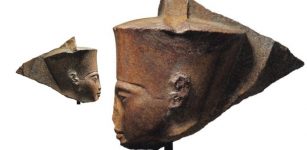 Egypt Calls On Christie’s Auction House In London To Stop Sale Of Tutankhamun Statue Head
Archaeology | Jun 14, 2019
Egypt Calls On Christie’s Auction House In London To Stop Sale Of Tutankhamun Statue Head
Archaeology | Jun 14, 2019 -
 Starkad The Viking – Legendary Norse Hero Who Was Both Blessed And Cursed By Gods
Featured Stories | May 21, 2025
Starkad The Viking – Legendary Norse Hero Who Was Both Blessed And Cursed By Gods
Featured Stories | May 21, 2025 -
 9,000-Years-Old Underwater Artifacts Found Off The Western Australia Pilbara Coast – Protect Flying Foam Passage Scientists Say
Archaeology | Jun 27, 2023
9,000-Years-Old Underwater Artifacts Found Off The Western Australia Pilbara Coast – Protect Flying Foam Passage Scientists Say
Archaeology | Jun 27, 2023 -
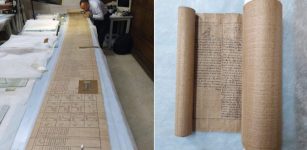 Never-Before-Seen 16 Meters Long Ancient Egyptian Papyrus Unveiled To The Public
Artifacts | Feb 21, 2023
Never-Before-Seen 16 Meters Long Ancient Egyptian Papyrus Unveiled To The Public
Artifacts | Feb 21, 2023 -
 Circular Stepped Pyramids Of Guachimontones And Teuchitlan Tradition – A Lost Ancient World In Mexico
Civilizations | Mar 13, 2016
Circular Stepped Pyramids Of Guachimontones And Teuchitlan Tradition – A Lost Ancient World In Mexico
Civilizations | Mar 13, 2016 -
 Maiden Castle, Dorset: There Was No Roman Massacre At This Iconic Site Of Britain
Archaeology | May 27, 2025
Maiden Castle, Dorset: There Was No Roman Massacre At This Iconic Site Of Britain
Archaeology | May 27, 2025 -
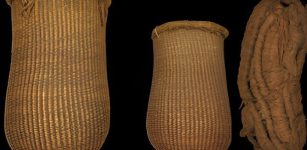 9,500-Year-Old Baskets And 6,200-Year-Old Sandals Found In Spanish Cave
Archaeology | Sep 28, 2023
9,500-Year-Old Baskets And 6,200-Year-Old Sandals Found In Spanish Cave
Archaeology | Sep 28, 2023 -
 Rare Medieval Seal Matrix Found By 10-Year-Old Boy In UK
Artifacts | Apr 5, 2022
Rare Medieval Seal Matrix Found By 10-Year-Old Boy In UK
Artifacts | Apr 5, 2022 -
 ‘Impossible’ Ancient Knowledge Of The Gods’ Star – First Observations – Part 1
Ancient Mysteries | Aug 29, 2021
‘Impossible’ Ancient Knowledge Of The Gods’ Star – First Observations – Part 1
Ancient Mysteries | Aug 29, 2021 -
 The Perplexing Story Of The Seven Continents And The Seven Mysterious Races – Distant Past – Part 1
Ancient Mysteries | May 9, 2022
The Perplexing Story Of The Seven Continents And The Seven Mysterious Races – Distant Past – Part 1
Ancient Mysteries | May 9, 2022 -
 A Unique Look Inside An Ancient Home In Pompeii Re-Constructed With Virtual Reality
News | Mar 26, 2022
A Unique Look Inside An Ancient Home In Pompeii Re-Constructed With Virtual Reality
News | Mar 26, 2022 -
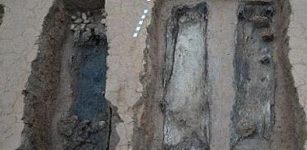 Large Collection Of 2,200-Year-Old Tombs With Boat Coffins Made Of Nanmu Wood, Unearthed In SW China
Archaeology | Feb 10, 2017
Large Collection Of 2,200-Year-Old Tombs With Boat Coffins Made Of Nanmu Wood, Unearthed In SW China
Archaeology | Feb 10, 2017 -
 Young Boy Finds A Huge Tooth From A Prehistoric Shark In South Carolina
Archaeology | Sep 3, 2022
Young Boy Finds A Huge Tooth From A Prehistoric Shark In South Carolina
Archaeology | Sep 3, 2022 -
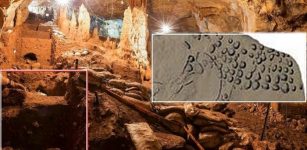 Aurignacians: Sophisticated And Mysterious Culture That Arrived To Levant 40,000 Years Ago – New Study
Archaeology | Nov 10, 2019
Aurignacians: Sophisticated And Mysterious Culture That Arrived To Levant 40,000 Years Ago – New Study
Archaeology | Nov 10, 2019 -
 Ghostly Appearance Of Weird Ancient City Suspended In The Sky Witnessed By Many People
Ancient Mysteries | Jul 9, 2019
Ghostly Appearance Of Weird Ancient City Suspended In The Sky Witnessed By Many People
Ancient Mysteries | Jul 9, 2019 -
 On This Day In History: Roman Emperor Caligula Was Born – On August 31, 12 AD
News | Aug 31, 2016
On This Day In History: Roman Emperor Caligula Was Born – On August 31, 12 AD
News | Aug 31, 2016 -
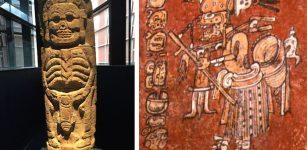 Ah Puch: Evil Death God Of Underworld Who Hated Souls In Maya Beliefs
Featured Stories | Feb 16, 2018
Ah Puch: Evil Death God Of Underworld Who Hated Souls In Maya Beliefs
Featured Stories | Feb 16, 2018 -
 On This Day In History: Battle Of Vinegar Hill Took Place – On June 21, 1798
News | Jun 21, 2017
On This Day In History: Battle Of Vinegar Hill Took Place – On June 21, 1798
News | Jun 21, 2017 -
 Mysterious Advanced Underground Civilization And A Secret Society – Astonishing Discovery And Connection – Part 1
Ancient Mysteries | Apr 21, 2018
Mysterious Advanced Underground Civilization And A Secret Society – Astonishing Discovery And Connection – Part 1
Ancient Mysteries | Apr 21, 2018 -
 Ancient Human Traces Found In The Inhospitable Namib Desert
Human Beginnings | Oct 21, 2024
Ancient Human Traces Found In The Inhospitable Namib Desert
Human Beginnings | Oct 21, 2024



